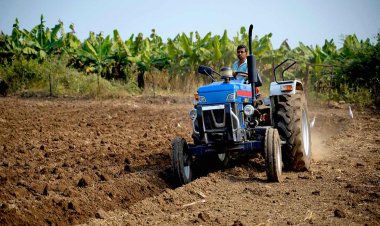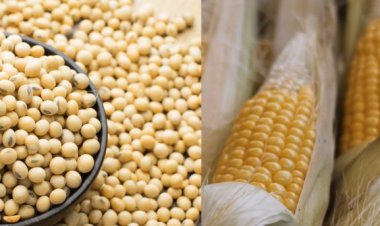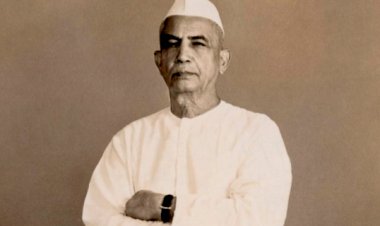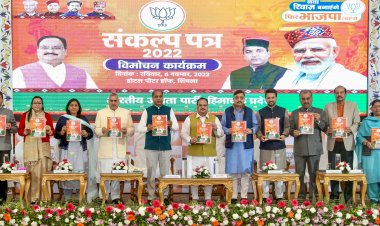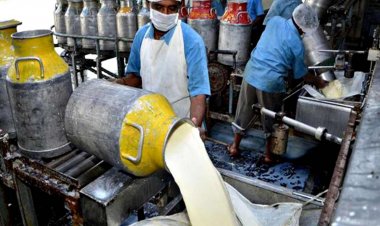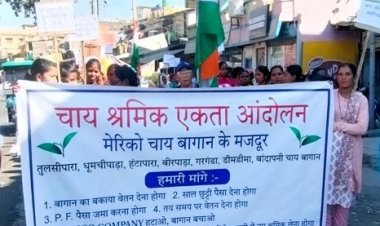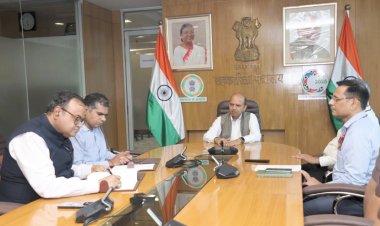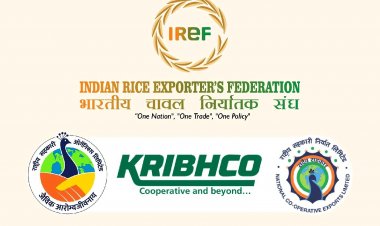India adversely impacted by a flawed and discriminatory subsidies’ regime
On December 14, a WTO dispute settlement panel concluded in its report that India was violating its commitments under the AoA by granting price support to sugarcane producers and export subsidies to sugar during the period 2014/15 to 2018/19. This is the first time that the government’s policies to support the country’s farmers have been challenged in the WTO, and the implications of this dispute can be far-reaching for India’s agricultural subsidy regime.
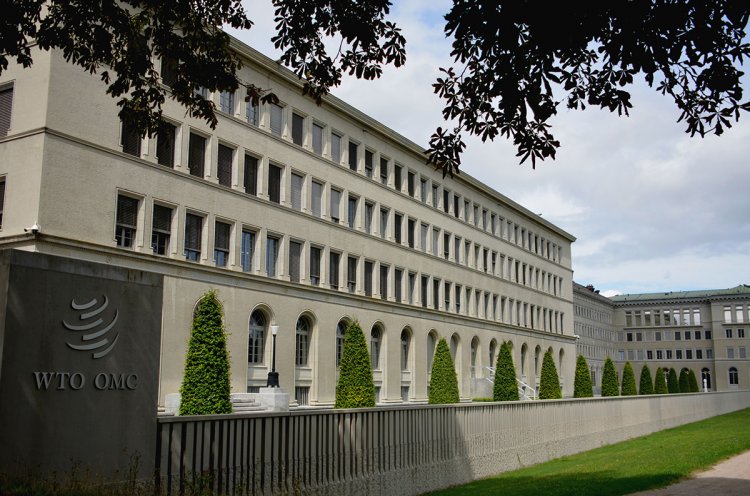
After they had forced the government to repeal the three controversial farm laws and to thus ensure the continuation of the minimum price support mechanism, India’s farmers are facing yet another challenge — this time from the World Trade Organization (WTO). On December 14, a WTO dispute settlement panel concluded in its report that India was violating its commitments under the Agreement on Agriculture (AoA) by granting price support to sugarcane producers and export subsidies to sugar during the period 2014/15 to 2018/19. This is the first time that the government’s policies to support the country’s farmers have been challenged in the WTO, and the implications of this dispute can be far-reaching for India’s agricultural subsidy regime.
The dispute settlement panel was established in 2019 after Brazil, Australia, and Guatemala had complained to WTO’s Dispute Settlement Body that the Fair and Remunerative Price (FRP), the minimum price that sugar mills must pay to the farmers, as well as the State Advised Price (SAP), which sugar mills located in the States must pay to their farmers for delivering sugarcane to the mills, were WTO-incompatible. FRP is fixed on the basis of the recommendations of the Commission for Agricultural Costs and Prices (CACP) in consultation with the State Governments and the sugar industry associations, while SAP is fixed by the State governments.
The complainants targeted the measures that the Central and 12 State governments had taken between 2014/15 to 2018/19 to ensure unhindered implementation of the FRP/SAP mechanisms. These measures, according to complainants, were in contravention of India’s commitments under the AoA. Their view was that while India had agreed to limit the subsidies granted to any agricultural commodity to 10 per cent of its value of production (the de minimis level), subsidies on sugar during the years mentioned had exceeded this threshold. Therefore, India had violated its commitments under the AoA. This was the basis of initiating the dispute against India.
In addition, the complainants argued that the Central Government and the State Governments were also granting subsidies for exporting sugar, and by doing so, India had violated its commitments under the AoA further as it did not have the right to grant direct export subsidies. Australia questioned four schemes that the government has in place for promoting exports of sugar. The complainants held that India had provided subsidies contingent upon export performance, which are WTO-inconsistent subsidies.
Arguments Against FRP and SAP for Sugarcane
The main argument of the complainants against the grant of FRP/SAP to sugarcane farmers was that the disciplines on domestic support measures introduced by the AoA was applicable to these measures, and that India had violated the disciplines. What are the claimed violations of the domestic support disciplines of the AoA by India?
The complainants’ arguments were the following: When the AoA was being formalized, India had declared that it gave no subsidies to its agriculture during 1986-88, the reference period adopted for the purposes of introducing the domestic support disciplines. This declaration was based on the methodology for calculating subsidies adopted in the AoA, according to which, the administered prices that India had announced for 17 crops, including major cereals, pulses, oilseeds, cotton, jute, tobacco, and sugar, were compared with their corresponding international prices, and the difference between the two sets of prices were considered as subsidies. Since the administered prices were below the international prices, the value of subsidies that India had granted as per the AoA methodology was (-) Rs 19861 crore or (-) 18 percent of the value of agricultural production. This figure also included subsidies on agricultural inputs, like fertilizers, credit, electricity and irrigation. In other words, rather than subsidizing agriculture, India was deemed to be taxing its farmers since their price realizations were below those prevailing in the international markets. It may be mentioned here that this methodology remains unchanged to date, meaning thereby that for calculating the subsidies granted in 2021, the current administered prices are still compared with the prices in the reference period of 1986-88, or the prices prevailing nearly 35 years back.
Based on this methodology, the AoA introduces two sets of disciplines. The first is that developing countries cannot give subsidies more than 10 per cent of the value of agricultural production. And secondly, for countries like India, which had declared that they gave no subsidies during 1986-88, subsidies granted to individual crops cannot exceed 10 per cent of their value of production. The complainants against India’s sugar subsidies argued that the value of subsidies on sugarcane granted between 2014/15 and 2018/19 had exceeded this 10 per cent threshold, thus violating AoA disciplines.
The dispute settlement panel concurred with the views of most of the complainants and those having third party rights in the dispute, that FRP and SAP are forms of market price support that should be considered as subsidies. However, India contested this view, arguing that Annex 3 of the AoA states that “subsidy can only exist where there is a budgetary outlay or revenue foregone by governments or their agents”, implying that governments must be involved in the payment of subsidies. India clarified that the Central and State Governments do not “purchase sugarcane or pay … FRP and SAPs” to the farmers; these payments are made by the sugar mills, which are private entities.
However, the dispute settlement panel disagreed with India’s argument that FRP and SAPs cannot be treated as subsidies. The panel’s contention was that the “market price” of an agricultural product is the price of the product in the market, and “price support” refers to the “assistance from a government or other official body in maintaining prices at a certain level regardless of supply or demand.” Therefore, a mandatory minimum price set by the government would seem to constitute “domestic support” to agricultural producers, even if it was paid by sugar mills.
This conclusion arrived at by the dispute settlement panel that FRP and SAPs are forms of subsidy raises at least two questions. The first is whether the panel had an adequate understanding of the factors behind the fixation of the statutory minimum prices that the farmers are entitled to receive from the sugar mills. Contrary to the panel’s view that the FRP and SAPs are intended to disregard the market mechanism of supply and demand, the real intent of the prices that the Central and State Governments direct the sugar mills to pay the farmers is to ensure that the latter receive fair prices from the former. Thus, the intention of the Central and State Governments is to improve the livelihoods of the farmers, who are already in considerable distress. In giving its ruling, the panel seemed to be ignorant of the reality that sugar farmers are in an adverse bargaining position vis-à-vis the sugar mills, and it, therefore, becomes imperative for the governments to step in to ensure that the farmers receive remunerative prices for sugarcane. Developing countries have long argued that the subsidies’ disciplines of AoA do not factor-in the realities of their agriculture, and this situation is made worse by the rulings given by dispute settlement panels such as the one being discussed here.
A second question against the panel’s ruling against India can be raised from the way it had concluded that FRP and SAPs are forms of price support measures or subsidies. As mentioned above, the panel rejected India’s argument that according to the AoA, a subsidy can only exist where there is a budgetary outlay or revenue foregone by governments or their agents. Instead, it maintained its view that the mandatory minimum price set by the government, which was paid by private entities, would “seem” to constitute “domestic support” to agricultural producers. This interpretation by the panel turns the definition of a subsidy given in the WTO Agreement on Subsidies and Countervailing Measures (ASCM) on its head. ASCM defines subsidies as follows: (i) a financial contribution by a government or any public body within the territory of a Member; (ii) a government practice that involves a direct transfer of funds, potential direct transfers of funds or liabilities; and (iii) government revenue that is otherwise due is foregone or not collected. Furthermore, the meaning of subsidy given by the Oxford Dictionary is as follows, “a sum of money granted from public funds to help an industry or business keep the price of a commodity or service low”. It is clear from these definitions that subsidies can arise only when a payment is made by the government or its agents. Thus, when non-government entities like sugar mills pay FRP and SAPs to farmers, why did the panel stretch itself to categorize these payments as subsidies?
A final comment must be made on the overall methodology to calculate the extent of subsidization that occurs when a WTO member relies on price support measures. As explained earlier, the extent of subsidization arising from price support measures is measured by the difference between the current administered prices of commodities and the international prices prevailing during 1986-88. This methodology is completely bereft of any economic logic: why should the current administered prices be compared with a set of prices that are 35 years old? Yet this irrational methodology continues because developed countries have refused to allow the use of more recent international prices, which would have realistically assessed the quantum of subsidization. If this flawed methodology perpetuates, disputes on India’s agricultural subsidies will become commonplace, as current administered prices of many crops are already above the international prices during 1986-88. It is therefore vital for India to make a strong pitch in the WTO for amending this methodology for calculating subsidies.
Arguments Against India’s Export Subsidies
The complainants argued that India was providing WTO-inconsistent export subsidies on sugar through the following four schemes: (i) Production Assistance Scheme, (ii) Buffer Stock Scheme; (iii) Marketing and Transportation Scheme; and (iv) the Duty-Free Import Authorization Scheme (DFIA) for sugar. In addition, the Central Government had adopted the policy of fixing Minimum Indicative Export Quotas (MIEQ) for each individual sugar mill to reduce the inventory levels with the sugar industry and to facilitate achievement of its financial liquidity. Further, under the Maximum Admissible Export Quantity (MAEQ) scheme, the Central Government was implementing a scheme for the export of sugar by providing a lumpsum export subsidy towards expenses on marketing costs including handling, upgrading and other processing costs and costs of international and internal transport and freight charges on the export of sugar. The complainants argued that since they were schemes for promoting exports, MIEQ and MAEQ were both prohibitive subsidies as defined by the ASCM.
These arguments raised two sets of problems for India. First, India does not have the right to grant export subsidies since it had declared during the formalization of the AoA that it did not maintain any export subsidy. Secondly, since India’s export subsidy schemes were prohibitive subsidies, they had to be withdrawn without any delay. However, the panel gave India a period of 120 days from the date of adoption of its report. Given the weight of the arguments, India has little option but to eventually withdraw its export subsidies on sugar.
The Road Ahead
The rulings against the domestic support and export subsidy regimes for sugarcane and sugar respectively could be a watershed moment for India’s agricultural subsidy regime. These complaints, especially against the FRP and SAPs, shows how adversely India has been impacted by a flawed and discriminatory subsidies regime thrust upon it by the AoA. The extent of subsidization caused by price support measures uses a methodology that defies economic logic, as mentioned above. India must raise the issue that international prices in the fixed base period of 1986-88 cannot be accepted as the basis for calculating the subsidies. If the fixed base period remains unaltered, sooner than later, the entire administered price mechanism that India has in place will be considered WTO-incompatible. India’s recent domestic support notifications submitted to the WTO show that the subsidies on rice are already more than the de minimis level of 10 percent, and questions have been asked in the discussions in WTO’s Committee on Agriculture on why subsidies on rice should not be discontinued.
The immediate response of India should be to appeal against this decision of the panel against sugar subsidies. Currently, the Appellate Body (AB) that would hear the appeal is non-functional because it does not have the personnel to function normally. The United States (US) under Donald Trump’s Presidency had refused to appoint new members to the 7-member AB, and the Biden Administration has continued in the same vein. The delay in the appeal process would give India the chance to have a comprehensive re-look at the agricultural subsidies regime and to also make a strong case against the flawed and discriminatory agricultural subsidies regime of the WTO.
(Dr Biswajit Dhar is a Professor at Centre for Economic Studies and Planning, School of Social Sciences, Jawaharlal Nehru University. The views expressed here are his own.)



 Join the RuralVoice whatsapp group
Join the RuralVoice whatsapp group

















